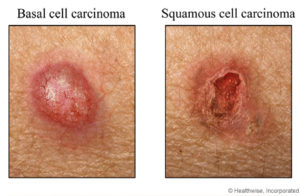 This study, like previous research, found an association between increased dietary fiber intake (specifically from cereal and vegetable fiber) and a reduced risk of developing type 2 diabetes. However, they did not find this link with fruit fiber, and also if the person was obese. From Medical Xpress;
This study, like previous research, found an association between increased dietary fiber intake (specifically from cereal and vegetable fiber) and a reduced risk of developing type 2 diabetes. However, they did not find this link with fruit fiber, and also if the person was obese. From Medical Xpress;
Study adds to evidence that increasing dietary fiber reduces the risk of developing diabetes
New research published today in Diabetologia (the journal of the European Association for the Study of Diabetes) indicates that consuming greater quantities of dietary fiber reduces the risk of developing type 2 diabetes. In this article the authors evaluated the associations between total fiber as well as fiber from cereal, fruit, and vegetable sources, and new-onset type 2 diabetes in a large European cohort across eight countries, in the EPIC-InterAct Study.
The authors divided the study participants into four equally sized groups from lowest to highest fiber intake, and assessed their risk of developing type 2 diabetes over an average of 11 years' follow-up.They found that participants with the highest total fiber intake (more than 26 g/day) had an 18% lower risk of developing diabetes compared to those with the lowest total fiber intake (less than 19 g/day), after adjusting for the effect of other lifestyle and dietary factors. When the results were adjusted for body mass index (BMI) as a marker of obesity, higher total fiber intake was found to be no longer associated with a lower risk of developing diabetes, suggesting that the beneficial association with fiber intake may be mediated at least in part by BMI.
When the authors evaluated the different fiber sources, they found that cereal fiber had the strongest inverse association: those with the highest levels of cereal and vegetable fiber consumption had a 19% and 16% lower risk of developing diabetes respectively, compared with those with the lowest consumption of these types of fiber. Again, these associations disappeared when the results were adjusted for BMI. By contrast, fruit fiber was not associated with a reduction in diabetes risk. Cereals accounted for 38% of the total fiber intake, and were the main source of fiber in all the countries involved in the study (with the exception of France where vegetables were the main source).
The authors also undertook a meta-analysis, where they pooled the data from this EPIC-InterAct study with those from 18 other independent studies (eight in the United States, four in Europe, three in Australia, and three in Asia). The meta-analysis included over 41,000 new-onset cases of type 2 diabetes and found that the risk of diabetes fell by 9% for each 10 g/day increase in total fiber intake, and by 25% for each 10 g/day increase in cereal fiber intake. They did not find a statistically significant relationship between increasing either fruit or vegetable fiber and reducing diabetes risk.

 Finding endocrine disrupting chemicals in 2 out of 10 baby teethers, which are supposedly safe products for babies, is disturbing. Unfortunately the study did not give the manufacturers names. There was even an 11th teether made of natural rubber that was found to leach compounds that were "
Finding endocrine disrupting chemicals in 2 out of 10 baby teethers, which are supposedly safe products for babies, is disturbing. Unfortunately the study did not give the manufacturers names. There was even an 11th teether made of natural rubber that was found to leach compounds that were "
 An interesting small study of one family shows how quickly one can eliminate many pesticides from the body by switching to an all organic diet. One Swedish family of 2 adults (aged 40 and 39) and 3 children (aged 12, 10, and 3) who had been eating mainly conventional food were studied.
An interesting small study of one family shows how quickly one can eliminate many pesticides from the body by switching to an all organic diet. One Swedish family of 2 adults (aged 40 and 39) and 3 children (aged 12, 10, and 3) who had been eating mainly conventional food were studied. My last post was about a recent Medscape article discussing whether
My last post was about a recent Medscape article discussing whether  Amusing but also scary. The negative effects on the gut microbes of one person consuming an all fast food diet for 10 days occurred very quickly, and his gut microbes did not recover even 2 weeks after the fast food diet ended. Biggest problem seemed to be loss of gut diversity - about 40% of his gut bacterial species. Loss of gut diversity is considered a sign of ill health. Written by Tim Spector, with Tom Spector's assistance, from The Conversation:
Amusing but also scary. The negative effects on the gut microbes of one person consuming an all fast food diet for 10 days occurred very quickly, and his gut microbes did not recover even 2 weeks after the fast food diet ended. Biggest problem seemed to be loss of gut diversity - about 40% of his gut bacterial species. Loss of gut diversity is considered a sign of ill health. Written by Tim Spector, with Tom Spector's assistance, from The Conversation:
 Tom Spector. Credit: Tim Spector
Tom Spector. Credit: Tim Spector More studies need to be done, but the possibility of simply taking 500 mg twice a day of
More studies need to be done, but the possibility of simply taking 500 mg twice a day of  Credit: WebMD, Healthwise, Inc.
Credit: WebMD, Healthwise, Inc.